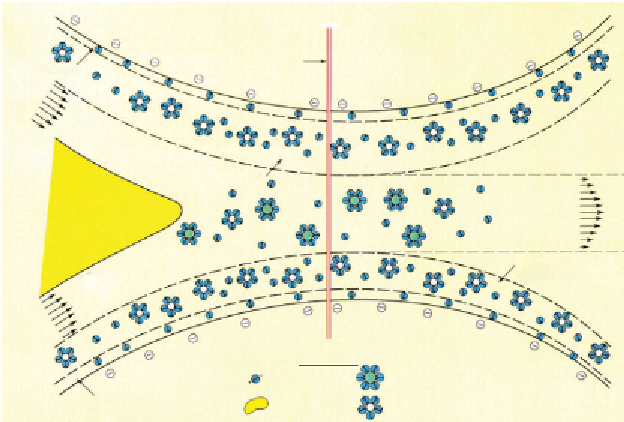Environmental Engineering Reference
In-Depth Information
Matrix grain
Net negative
Capillary barrier
Bound layer
Helmholtz layer
Pore Throat
Darcy Flow
HC
Outer Helmholtz
layer
Matrix grain
EXPLANATION
Cl
-
H
2
O molecule
Hydrocarbon
Bound layer
Na
+
Figure 3.12
Pore throat schematic showing double layers forming adjacent to clay
mineral surfaces and restricting darcy flow through the center of the pore throat (after
Hill et al., 1999)
Figure 3.12 is a schematic diagram of a pore throat, illustrating the
Helmholtz double layer lining. It is formed, in preferentially water-saturated
rocks, by the attractive forces between the electrically negative surfaces of
minerals and the positive poles of water molecules and positive (cat) ions,
in aqueous solution (connate waters). There are no negative anions within
the Helmholtz double layer.
This electrical double layer is divided into two electrochemical regions:
•
A region of fixed water molecules and cations (Bound, Stern,
or Inner Helmholtz layer), held by strong electrostatic forces
to negatively charged mineral surfaces.
•
A more mobile region of loosely bound cations and water
molecules (Outer Helmholtz, or Gouy layer), which are par-
tially shielded from the negatively charged mineral surfaces
by the water molecules and cations of the Stern layer. These
loosely bound cations and water molecules can move in the
presence of an electrical external field.
If the pore throats are large enough, a third electrochemical region (free
fluid) exists, containing water molecules, as well as both anions and cations.
















Search WWH ::

Custom Search